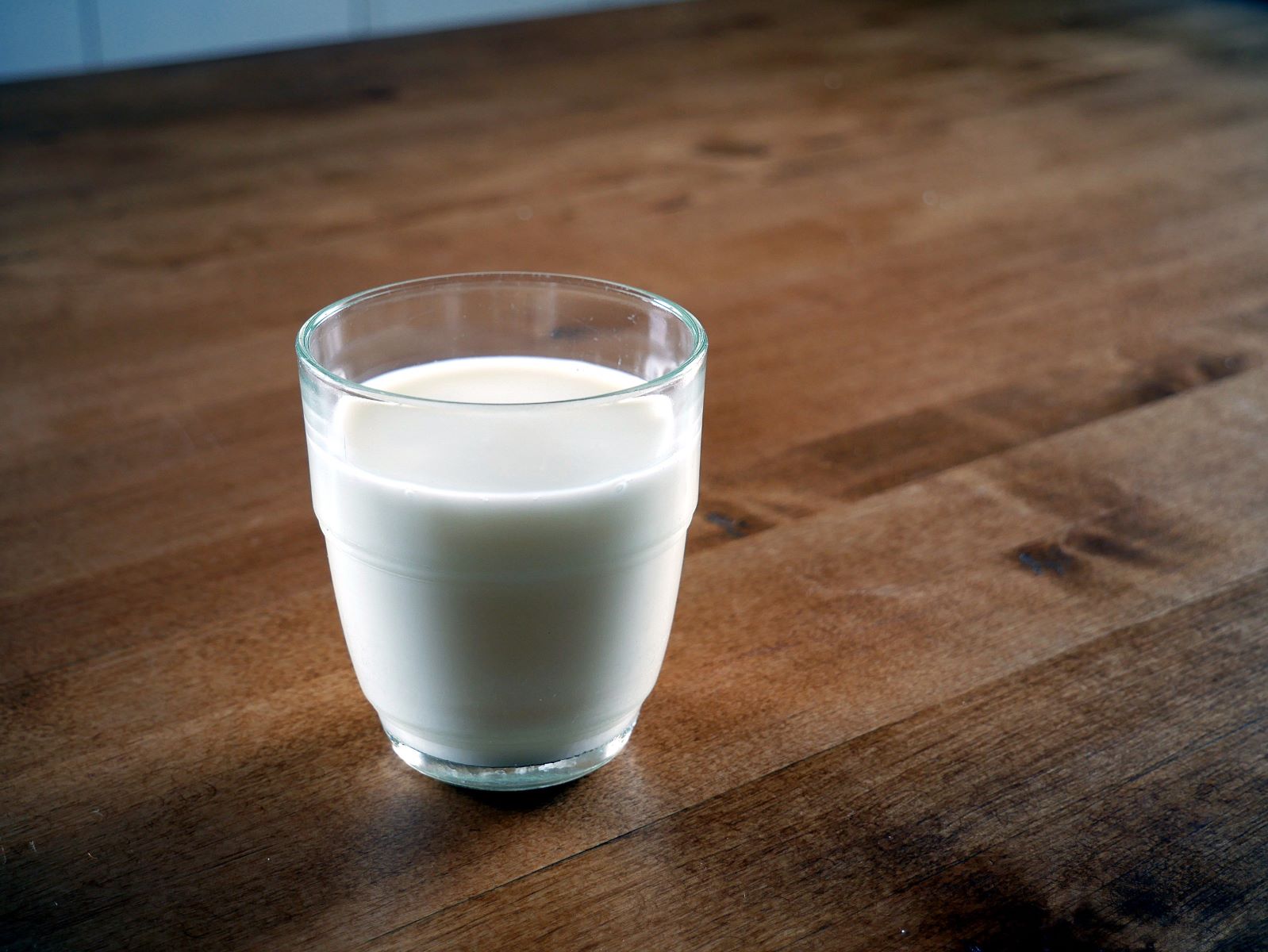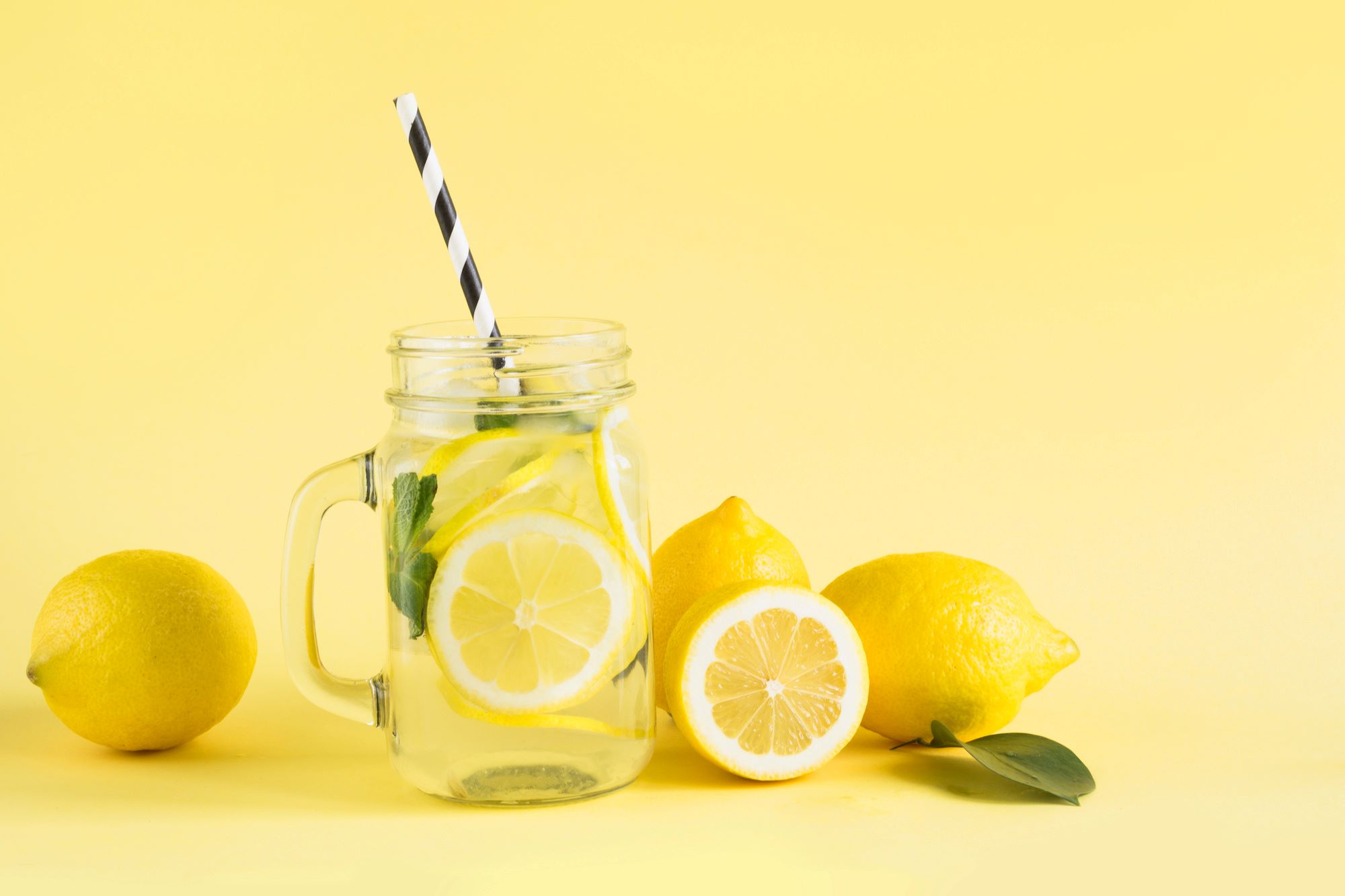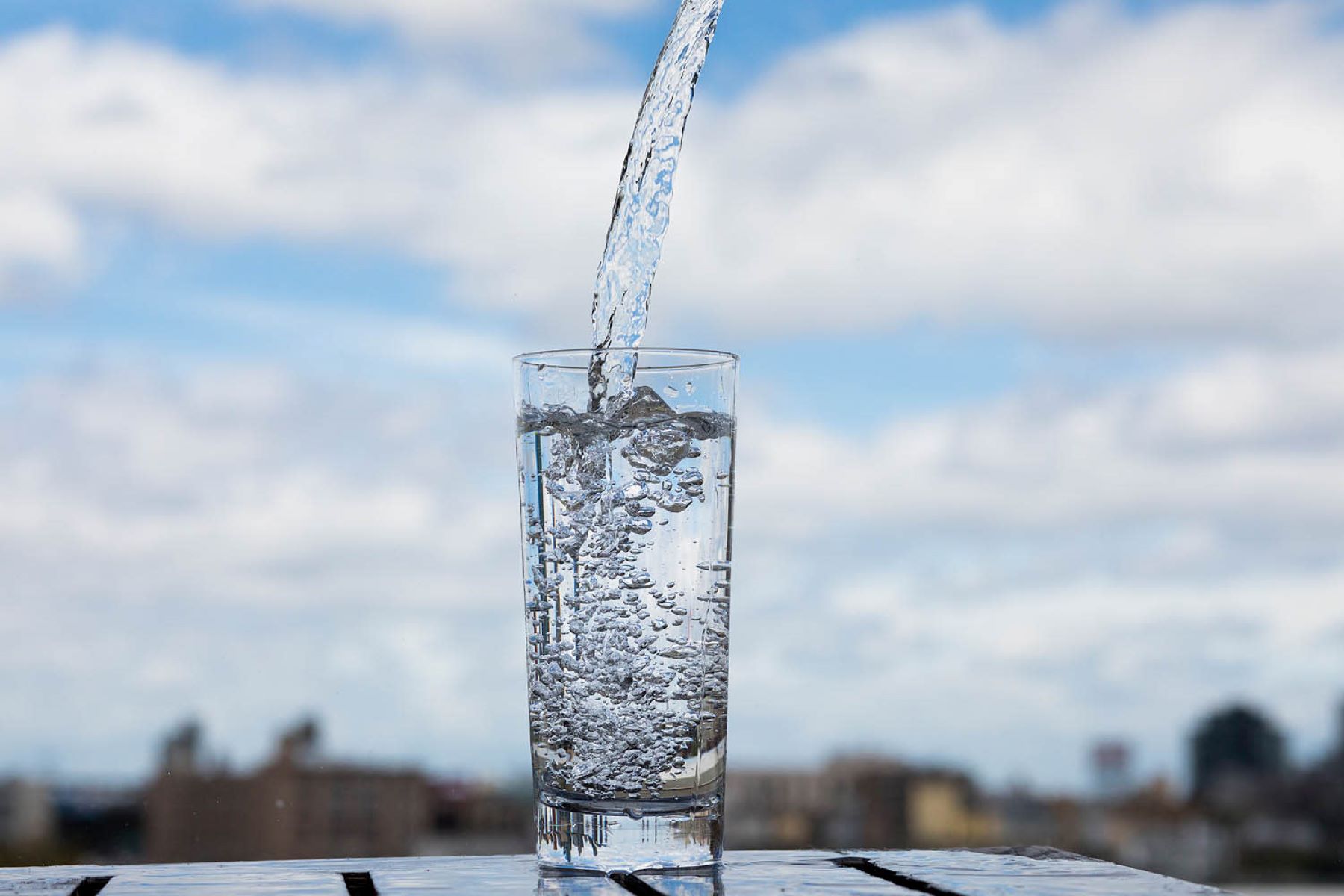Home>Furniture & Design>Interior Design Trends>How Many Calories In One Glass Of Milk


Interior Design Trends
How Many Calories In One Glass Of Milk
Published: February 6, 2024
Discover the latest interior design trends and get inspired to transform your space. Stay updated with the top trends in interior design for a stylish and modern home.
(Many of the links in this article redirect to a specific reviewed product. Your purchase of these products through affiliate links helps to generate commission for Storables.com, at no extra cost. Learn more)
Introduction
Milk is a staple in many households, cherished for its versatility and nutritional value. Whether enjoyed on its own, added to cereal, or used in cooking and baking, milk is a versatile ingredient that has been a part of human diets for centuries. Understanding the caloric content of milk is essential for individuals seeking to maintain a balanced diet and make informed dietary choices.
In this article, we will delve into the caloric content of milk, exploring the nutritional value it offers and the varying calorie counts in different types of milk. By shedding light on the factors that influence the caloric content of milk, we aim to provide readers with a comprehensive understanding of this beloved beverage's impact on their daily caloric intake. Let's embark on a journey to uncover the calorie mysteries of milk and gain valuable insights into its role in our diets.
Key Takeaways:
- Milk’s caloric content varies by type and factors like fat content and processing. Whole milk has around 150 calories per cup, while skim milk offers a lighter option at approximately 80 calories.
- Understanding milk’s caloric differences empowers informed dietary choices. Whether craving indulgence or seeking lower calories, various milk types cater to diverse preferences and nutritional needs.
Read more: How Many Calories Is A Glass Of Milk
Nutritional Content of Milk
Milk is renowned for its rich nutritional profile, making it a valuable addition to a balanced diet. This dairy product is a powerhouse of essential nutrients, including calcium, protein, vitamins, and minerals, all of which contribute to its significant role in supporting overall health.
Protein
One of the key components of milk is protein, which is crucial for muscle development, repair, and overall bodily function. A single cup of milk typically contains around 8 grams of protein, making it an excellent source of this essential macronutrient.
Calcium
Calcium, known for its role in promoting strong bones and teeth, is abundantly present in milk. A single cup of milk can provide approximately 300 milligrams of calcium, contributing significantly to the recommended daily intake of this vital mineral.
Vitamins
Milk is also a notable source of various vitamins, including vitamin D, which aids in calcium absorption, and vitamin A, essential for maintaining healthy vision and skin. Additionally, milk contains B vitamins such as riboflavin, which supports energy production, and vitamin B12, crucial for nerve function and the formation of red blood cells.
Read more: How Many Calories Does A Glass Of Milk Have
Other Minerals
In addition to calcium, milk contains essential minerals such as phosphorus, potassium, and magnesium, each playing a unique role in supporting overall health and bodily functions.
Fats and Carbohydrates
Milk contains a balance of fats and carbohydrates, providing a source of energy and contributing to the overall macronutrient composition of the diet.
Understanding the rich nutritional content of milk underscores its significance as a wholesome beverage that offers a wide array of essential nutrients. This comprehensive profile makes milk a valuable addition to a well-rounded diet, supporting overall health and well-being.
Calories in Different Types of Milk
The caloric content of milk can vary significantly depending on the type and processing methods. Understanding the calorie differences between various types of milk is essential for individuals seeking to manage their caloric intake and make informed dietary choices. Let's explore the calorie counts in different types of milk to gain a comprehensive understanding of their nutritional profiles.
Whole Milk
Whole milk, known for its rich and creamy texture, is a popular choice for many consumers. A one-cup serving of whole milk typically contains around 150 calories. This higher calorie count is attributed to the milk's full-fat content, which contributes to its indulgent taste and mouthfeel.
Read more: How Many Calories Is A Glass Of Whiskey
2% Reduced-Fat Milk
2% reduced-fat milk offers a middle ground between whole milk and lower-fat alternatives. A one-cup serving of 2% milk generally contains approximately 120 calories. The reduction in fat content results in a lower overall caloric value while still retaining a satisfying taste and texture.
1% Low-Fat Milk
1% low-fat milk is a lighter alternative that appeals to individuals seeking to reduce their fat intake while still enjoying the nutritional benefits of milk. A single cup of 1% milk typically contains around 100 calories, reflecting the lower fat content compared to whole and 2% milk.
Skim or Fat-Free Milk
Skim milk, also known as fat-free milk, is prized for its minimal fat content and lower calorie count. A one-cup serving of skim milk generally contains approximately 80 calories, making it the lowest-calorie option among traditional dairy milk varieties.
Plant-Based Milk Alternatives
In recent years, an array of plant-based milk alternatives has gained popularity, offering options for individuals with dietary restrictions or preferences. The caloric content of these alternatives can vary widely depending on the source and any added sweeteners or flavorings. For example, almond milk typically contains around 30-60 calories per cup, while coconut milk may range from 45-60 calories per cup.
Read more: How Many Calories Is A Glass Of Riesling?
Factors Affecting the Caloric Content
The caloric content of milk is influenced by various factors, including the fat content, added sweeteners, and any fortifications or flavorings. Understanding these factors can help individuals make informed choices based on their dietary needs and preferences.
By exploring the calorie counts in different types of milk, individuals can make conscious decisions about their milk consumption, aligning with their nutritional goals and preferences. Whether seeking a rich and creamy indulgence or a lighter, lower-calorie option, the diverse range of milk varieties caters to a wide spectrum of dietary needs and taste preferences.
Factors Affecting the Caloric Content
The caloric content of milk is influenced by several key factors, each playing a significant role in determining the overall energy value of this beloved dairy product. Understanding these factors is essential for individuals seeking to make informed dietary choices and manage their caloric intake effectively.
Fat Content
One of the primary factors affecting the caloric content of milk is its fat content. Whole milk, renowned for its rich and creamy texture, contains a higher fat content compared to reduced-fat and fat-free alternatives. As a result, whole milk typically has a higher caloric value, with approximately 150 calories per cup, compared to the lower calorie counts of reduced-fat and fat-free options. The fat content contributes to the mouthfeel and flavor of the milk, influencing its overall caloric density.
Added Sweeteners and Flavorings
Some commercially available milk products may contain added sweeteners, flavorings, or syrups to enhance taste and appeal to consumer preferences. These additions can significantly impact the caloric content of the milk, leading to higher energy values per serving. Individuals seeking to manage their sugar intake should be mindful of flavored milk products and opt for unsweetened or naturally flavored alternatives to minimize their overall caloric consumption.
Read more: How Many Calories Is A Glass Of Prosecco
Fortifications
Certain types of milk may be fortified with additional nutrients such as vitamins A and D, calcium, or protein. While these fortifications enhance the nutritional value of the milk, they can also contribute to a slightly higher caloric content. It is important for consumers to consider the overall nutritional benefits of fortified milk while being aware of the potential impact on caloric intake.
Processing Methods
The processing methods used in milk production can also influence its caloric content. For example, the concentration of milk solids and the removal of water during the production of condensed milk result in a higher caloric density compared to traditional fluid milk. Similarly, evaporated milk, which undergoes a dehydration process, has a higher caloric content due to its reduced water content.
Overall Composition
The overall composition of milk, including its balance of macronutrients such as protein, carbohydrates, and fats, contributes to its caloric value. While protein and carbohydrates provide energy, the fat content significantly influences the overall caloric density of the milk, making it essential for individuals to consider their dietary preferences and nutritional goals when selecting milk products.
By considering these factors, individuals can make informed decisions about their milk consumption, aligning with their dietary needs and preferences. Whether seeking a rich and indulgent option or a lighter, lower-calorie alternative, understanding the factors influencing the caloric content of milk empowers individuals to make conscious choices that support their overall well-being.
Conclusion
In conclusion, the caloric content of milk varies across different types and is influenced by factors such as fat content, added sweeteners, fortifications, and processing methods. Whole milk, with its higher fat content, carries a caloric density of approximately 150 calories per cup, while reduced-fat and fat-free options offer lower calorie counts, catering to diverse dietary preferences. Additionally, plant-based milk alternatives provide alternatives for individuals with specific dietary needs, offering a range of caloric values based on their sources and formulations.
Understanding the nutritional content and caloric differences among various types of milk empowers individuals to make informed choices that align with their dietary goals and preferences. Whether seeking a rich and indulgent option or a lighter, lower-calorie alternative, the diverse range of milk varieties caters to a wide spectrum of dietary needs and taste preferences.
By being mindful of the factors influencing the caloric content of milk, individuals can effectively manage their caloric intake while enjoying the nutritional benefits this versatile beverage offers. Whether consumed on its own, added to recipes, or used as a base for beverages, milk remains a valuable source of essential nutrients, including protein, calcium, vitamins, and minerals, contributing to overall health and well-being.
As individuals navigate their dietary choices, understanding the caloric content of milk serves as a foundational element in maintaining a balanced and wholesome diet. By incorporating this knowledge into their daily routines, individuals can optimize their nutritional intake while savoring the versatility and nourishment that milk provides.
In essence, the caloric content of milk reflects its role as a fundamental component of diverse dietary patterns, offering a spectrum of options to suit individual preferences and nutritional needs. With this understanding, individuals can embrace the nutritional richness of milk while making conscious choices that support their overall well-being.
Frequently Asked Questions about How Many Calories In One Glass Of Milk
Was this page helpful?
At Storables.com, we guarantee accurate and reliable information. Our content, validated by Expert Board Contributors, is crafted following stringent Editorial Policies. We're committed to providing you with well-researched, expert-backed insights for all your informational needs.












0 thoughts on “How Many Calories In One Glass Of Milk”